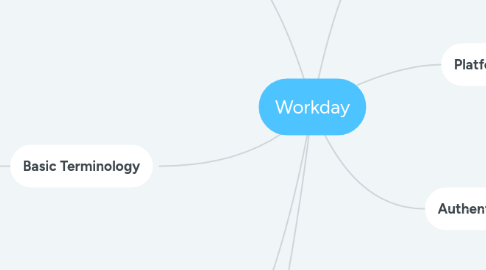
1. Supported Tools
1.1. WCP Command Line Interface
1.1.1. To generate access tokens
1.1.2. To request reference data
1.1.3. To move files
1.1.4. and more...
1.2. API Explorer
1.3. Sample applications
2. Basic Terminology
2.1. Development tenant (a.k.a developer tenant, SUV)
2.1.1. contains staged data for testing purposes
2.1.1.1. GMS (Global Modern Services)
2.1.1.1.1. A Workday tenant with staged data of a typical global corporate customer.
2.1.1.1.2. Standard login user: lmcneil (CHRO)
2.1.1.1.3. Other common users: smorgan (CEO), tserrano (CFO), jlee (VP of Sales)
2.1.1.2. AMU (Alma Mater University)
2.1.1.2.1. less common
2.1.1.2.2. stage data of typical education and government customer
2.2. JSON
2.2.1. JavaScripts Object Notation
2.3. https://developer.workday.com/documentation#/dlx1529688880052/ReferenceBasicTerminology
3. Community
3.1. Workday Partner
3.1.1. GHX (from 2017)
3.1.2. https://community.workday.com/workday/ecosystem?partner-ecosystem-search=ghx&sort_by=name_9&sort_order=ASC
3.2. Workday integration on demand - White paper
3.2.1. https://community.workday.com/system/files/media/attachments/workday-integration-on-demand-whitepaper.pdf
4. Workday Studio
4.1. A powerful development tool that enables customers and partners to build sophisticated integrations to and from Workday applications.
5. Presentation Services interface (formerly known as VPS)
5.1. Workday Canvas Design System guidelines (Workday's UI components)
5.2. A set of building blocks
5.3. To develop a custom app using the Workday UI widgets that interact with Workday and external data
6. Platform Services
6.1. REST APIs
6.1.1. Custom business processes
6.1.2. Custom objects and tasks
6.1.3. Data and analysis services
6.1.4. Human resource management services
6.1.5. Financial management services

